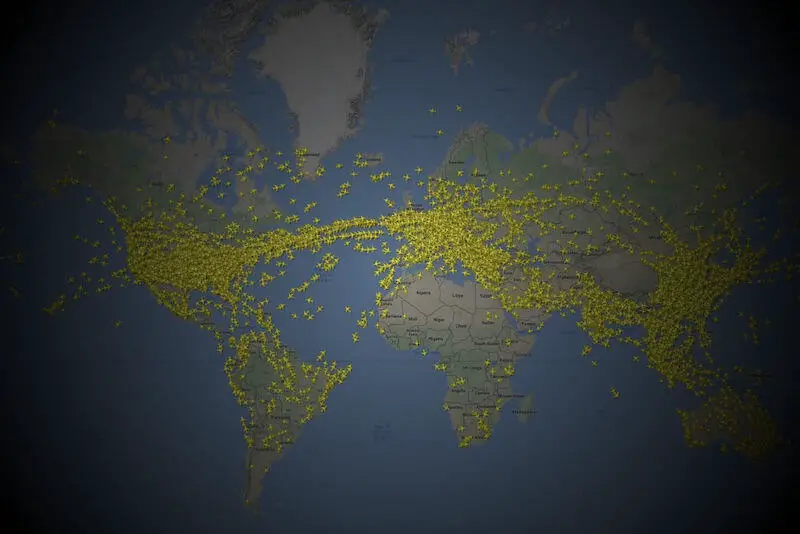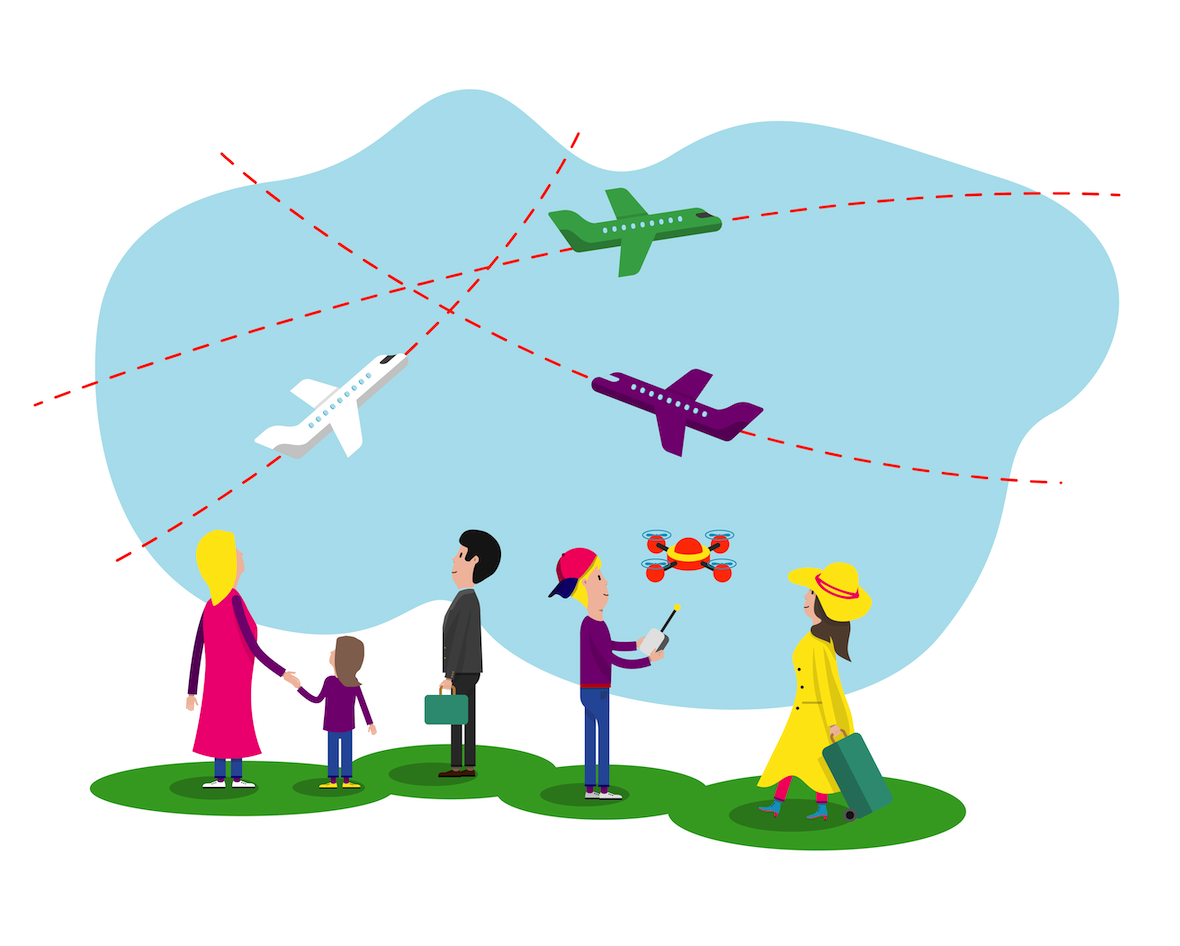

For a long time, tracking flights from the ground was a complicated endeavour. To date, there is still no means of ground transportation capable of travelling at the speed of aircraft. It used to be that flights could only be tracked using another aircraft. Today, it’s much easier – thanks to digital technology and the Internet. Tracking a flight is easy and free of charge. All you need is a PC or a smartphone. Flight tracking using an aeroplane was never really in high demand as a service. Today, this method is entirely a thing of the past.
What does flight tracking mean today?
Today, flight tracking does not really mean tracking in the literal sense. Flight tracking used to mean physically following an aeroplane; that is, actually driving or flying behind it. Modern flight tracking is something quite different. Nowadays, people track flights through digital channels. There are also apps available for mobile devices such as smartphones and tablets that let you easily display and track flights. You can also use your home computer to look up and track just about any flight in the world with just a quick glance online. Services like flightradar24 and Casper make it possible.
What flight tracking is used for
Originally, flight tracking was used for controlling and monitoring airspace. Flight radar systems were reserved for professionals. Now as before, every plane is still located by radar. But the way planes were displayed on conventional radar screens is now a thing of the past. Flight radar information is digitised and transferred to digital map views. This way, you can see where a plane is currently located much more intuitively and precisely when tracking flights. You can also trace entire flight progressions on the screen. Flight paths can be traced back, since earlier positions of the plane can be accessed and displayed as a progression.

But flight tracking is no just used for air traffic control any more. Service providers like Flugradar24 allow anyone to track flights on a flight radar. For some, flight tracking is an fun little diversion. For others, the data provides important information that they use day to day. All the flight radar info can be used by private consumers, for example:
- To check flight routes
- To monitor problems with flights and, in the worst-case scenario, to trace events leading up to a crash.
- To check for potential noise pollution (flight noise)
- To look up arrival times and delays
- To look up details on the of aircraft type and capacity
- Details on the departure city and destination airport

Practical information on flight tracking
One of the highlights of flight tracking is the map display. It provides insight into the many flights taking place day and night around the world. But flight radar also provides other kinds of highly useful information. This information only becomes apparent when you select one of the planes on the map or enter a specific flight number. Information that can be obtained through flight tracking includes:
- The flight number
- The name of the airline
- The scheduled departure time
- The scheduled arrival time
- The actual departure time (in case of delays)
- The estimated arrival time
- The shortest distance between departure and destination
- The distance flown
- The distance remaining
- Information on the type of aircraft
- Flight altitude
- Ground speed
Some information is blocked, and there may be slight variations in which details are available. Unavailable information is indicated with a little padlock icon on some sites.
When tracking a flight, it can be very practical to hide all other flights from the map. With a simple mouse-click, you can set the display to show only the flight that you’re interested in. In this view, you can also see the direct connection between the plane and its destination. This way, you can use the radar to see which portion of the total distance the plane has already travelled and how far it still has to go.
Mobile flight tracking
Even when you’re away from home, there’s no reason to lose access to flight radar. For starters, the map views generally work in any conventional web browser. So you don’t necessarily have to download a flight tracker app. But some users do stand to benefit from purchasing or downloading apps. For example, historical data on flights can only be accessed through app versions which first have to be purchased. Flugradar24, for example, features a “Silver Version”, where flight histories can be traced back 60 days. Other extra information and features available by purchasing the app include:
- Additional details on the aircraft (age, serial number)
- Details which are blocked on the free version (e.g. vertical speed)
- Bookmarks, alerts and filters
- A weather map which is superimposed on the map display and lets you track flights through different weather patterns.
- Information on flight routes
- Data on flight control duties (according to responsibilities in countries and regions)
Flight tracking – an exciting development
The evolution of flight tracking from the early stages of aviation to the present day is really quite impressive. Once, flight radar data could only be viewed by a select few flight control professionals. But today, with the help of applications like Casper and Flugradar24, this information is available to everyone. And the end of the road is not yet in sight. The future of flight tracking is in 3D viewing. It’s already possible to access the front camera of some aeroplanes from a smartphone and check out the view from the cockpit. And we can be sure that there are lots more exciting developments ahead for flight tracking.